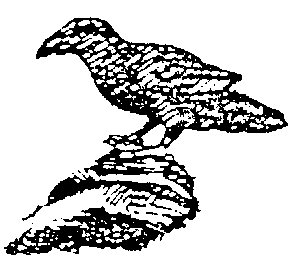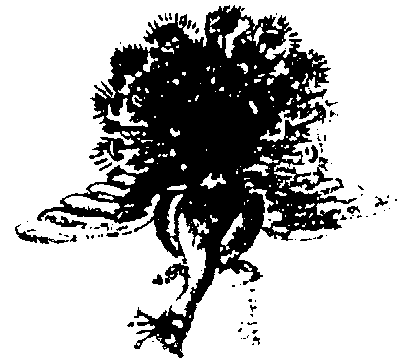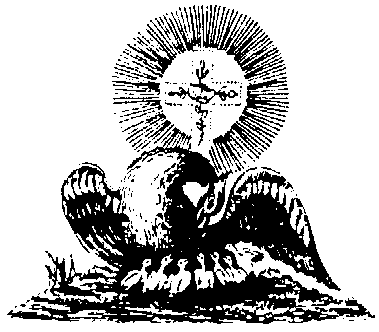
|
|
The Birds in Alchemy by Adam McLeanThis article written in 1979 was first published in the Hermetic Journal No. 5.In alchemical writings we meet a seemingly bewildering multiplicity of animal symbols - red lions, white eagles, stags, unicorns, winged dragons and snakes. Although at first glance all this complex mass of symbolism seems tortured and confused there is an inner coherence to these symbols, which the ancient alchemists used in specific ways reflecting their esoteric content. In this article I wish to consider a particularly tight knit group of these animal symbols, the birds of alchemy - the Black Crow, White Swan, Peacock, Pelican, and Phoenix - which are descriptive of certain stages of the alchemical process. Of course it would be wrong to suggest that there are fixed rigid meanings with regard to these symbols. The alchemists always integrated the symbols they used, so that one has to look at the total context, the background against which they stand, but when the birds appear in this sequence it is almost certain that the following interpretation can be applied. Firstly, let us look at the symbols in general. What did the alchemists wish to symbolise by birds? The essential thing about birds is that they, having as their domain the air element, mediate between the earthly realm and the heaven world. The alchemist in observing the flight of birds, recognised in them a picture of the human soul undergoing spiritual development. The soul, aspiring upwards, flying free of the restraints of the earth bound body seeking the heavenly light, only to have to return to the earthly consciousness again after the meditation, the alchemist symbolised by the bird. Thus the bird symbols, in alchemy, reflect the inner experiences of soul alchemy, the soaring of the soul free from the earth bound body and the physical senses. The soul, in the meditations of soul alchemy, touches upon the spiritual world, and brings something of this back into the outer life again. The birds as symbols mediate between the physical and spiritua1 worlds, they reflect certain archetypal experiences encountered by the soul in its development through the alchemical process. These symbols were used in two ways. Firstly, as a description in a text of one aspect of the process. Thus the alchemist might indicate a certain process as the Pelican stage, and describe certain facets of this by using perhaps other symbols, Secondly, these bird symbols could be used as a subject matter for a meditation, and by inwardly building such a symbol, one connected in soul with the essential experience of the particular stage of the alchemical-soul process. Now us will look at these in detail. I would like to consider them in the following sequence, one which occurs in various sources: Black Crow - White Swan - Peacock - Pelican - Phoenix - as these correspond to a developing inner experience which involves a progressively deepening encounter with the inner spiritual dimension of our being.      Thus we can sketch shortly the process of Soul alchemy, the integration, purification and transmutation of the soul, as pictured in this series of bird symbols.
withdrawal freeing of the
from depend- BLACK CROW PHOENIX spirit from the
ence on the bounds of the
Physical senses physical
experience of WHITE SWAN PELICAN using consciously
the etheric the forces of the
body etheric body
PEACOCK
astral body consciousness
inward immersion point of transformation outward expression
integration purification transmutation
The Peacock's Tail is the central experience to this process, the point of inner transformation, which arises from a true consciousness of the astral body. We note also that the other stages mirror each other. Thus the Black Crow and the Phoenix are related as beginning and end of the process, but in a deeper sense they are both connected with death-processes. The dying to the senses of the Black Crow stage is ultimately transformed into the triumph over the death process of the physical, that is pictured by the Phoenix. There is a further mirroring of the White Swan and Pelican stages. The White Swan is an experience of the etheric forces in one's being, and this is later transformed into a conscious mastery and outward expression of these life forces.The Peacock's Tail stage - the conscious experience of the astral body - stands alone in this picturing of the process, though it was sometimes split into two facets, in the writings of some alchemists - an initial winged dragon phase which resolved into the Peacock's Tail. In the initial encounter with the astral body, the negative distorted aspects of one's being can dominate, and these can be pictured as the winged dragon, but through soul purification, ultimately the full beauty and splendour of the astral body are revealed in the Peacock's Tail. In the early alchemical texts (and in particular the 'Rosarium philosophorum'), this picture of soul alchemy is developed in parallel with descriptions of what was a sore physical process. Thus it was that the soul development of the alchemist went hand in hand with an actual physical operation, and this operation, the details of which have not been wholly lost, involved colour and form changes within a sealed flask, isomorphic to the inner changes of soul alchemy, described by these bird symbols. Thus we had a physical process which involved a blackening, a whitening; a rapid iridescence of colours, a circular distillation stage, and a final sublimation. Part of the task of modern alchemy must be to rediscover this physical process, and explore its further ramifications. |